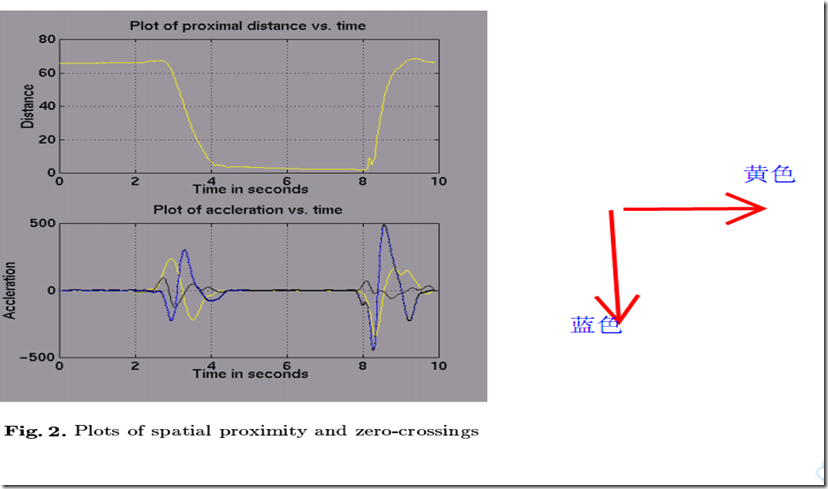цвГхQ?Check height of the foot
фМчЙхQeasy
О~КчЙхQ?easily fooledхQif a character skids to a stop
Baseline mehtod 2
цвГхQ?Check speed of the foot
фМчЙхQeasy
О~КчЙхQ?unreliable the markers have some speed even during foot plants. marker data is noisy
Bindiganavale 98 Proceeding of the International Workshop on Modeling and Motion Capture Techniques for Virtual Environments
цвГхQ?detect zero-crossing in acceration space of the end effectors
фМчЙхQ?work well for non-noisy data
О~КчЙхQ?nbsp; unreliable on motion capture data not reliabel when working with noisy signals require manualy tagged-objects to avoid checking for collison with all the objects in the scene
Liu and Popovic 2002 Siggraph
цвГхQdetect frames in which the feet are stationary
фМчЙхQwork well for non-noisy data
О~КчЙхQ?unreliable on motion capture data, not automatic .This method is dedicated to keyframed animation and is not intended to be applied to motion capture as it does not consider noise in the data.
Kovar 2002 Symposium on Computer Animation
щЂчЎхQFootskate cleanup for motion capture editing
цвГхQuse specific thresholds on the position and velocity of the feet to detect them.
фМчЙхQ?/p>
О~КчЙхQnot reliable for motion capture animation as derivatives tend to amplify nosie in signals
Lee 2002 Siggraph
щЂчЎхQInteractive control of AVstars animated with human motion data
цвГхQ?consider body segments and objects in the environment relative velocity and position to decide whether a body segment is in contact with an object in the scene or not
фМчЙхQ?/p>
О~КчЙхQnot reliable for motion capture animation as derivatives tend to amplify nosie in signals
S.Menareais 2004 Symposium on Computer Animation
щЂчЎхQ?Synchronization for Dynamic blending of motions
цвГхQuse specific thresholds on the position and velocity of the feet to detect them
фМчЙхQ?/p>
О~КчЙ not reliable for motion capture animation as derivatives tend to amplify nosie in signals
Ikemoto 06 Symposium on Interactive 3D Graphics
цвГхQuse a classifier to detect when foot plants should occur.By labeling a small set of frames, a user trains a classifier to detect when the foot should be planted.The classifier then automatically labels the remainder of the frames.
фМчЙхQ?semi-automatic(шЎчЛщЈхщшІцхЈхфИ?,
О~КчЙхQ?This method is dedicated to footplants detection and would be difficult to generilized to any kind of effectors and /or constraints .Indeed ,detecting another type of constraints would require to build a new kind of teature vectors and to train the calssifier once more.
цЯxГхQшПфИЊцЙцГцВЁчцууушЏДхЎшЏууяМфИфИхщНхЈцшПфИЊуухКфКщ фКфИЊEmacsуууяМ
1хQ?щІх цфЙцфИОlДmarkчЙчшНЈшПЙц хАхюCКОlДфИхQшфИщНцЏхЏwНчяМ фЛrootчвЅцяМхQшВфММrootчЙчМЎхЏфЛЅцхQ?/p>
2хQ?фИщЂЎБхЉфИфКчЛшчфИшЅПуу?1хИЇчщЎщЂууу?/p>
шВфММччЁЎцЏSKELETONчИх ГчууцфЛЅфИщхцфЛЌчщЎщЂуууsummerшЏДчччЁЎцЏфИщчуу?/p>
Le 06 Symposium on Computer Animation
щЂчЎхQRobust kinematic constraint detection for motion data
цвГхQ?/p>
фМчЙхQ?/p>
О~КчЙхQ?/p>
qфИЊRoubust Kinematic чхОцчцЏхЄДхЄЇчхОхуууSVDхшЇЃхQчКПцЇфЛЃцАуууц ЎчЉКщДууущЋцЏхЊхЃАууухЊхЃАцЈЁцбууцхфИЊх
Rух
шЁЅхКМуу?/p>
щІх фЛЅчЈAbstractчфИхЅшЏ Spatial Proximities of end-effectors with tagged objects during zero-crossing in acceleration space are used to isolate significant events and abstract constraints from an agents`s action
НIКщДчшЗМШКІцччЎчЎБцЏфИоZКцНхЛхКх ЗцццОцфЙчхИ?/p>
The zero-crossing point in trajectory implies changes in motion such as starting from rest ,coming to a stop ,or changing the velocity direction .
фЛЅцхшЂЋхфифОяМщІх хЈцфИцфИфИЊmarkчЙяМцЏхфИцфИфИЊtagчV?/p>
хНфКш фЙщДчшЗчІЛЎфКфИхЎхМчцЖхяМхМхЇшПшЁшЗэtЊучЖххЈх щхКІНIКщДфИшПшЁZero Crossing
НWЌфИфИЊхОцЏшЗМШКІцяМНWЌфКфИЊхОх щхКІОUІцхQх ЖфИщЛшВчфЛЃшЁЈцЈЊхх щхКІхQцЙххІх_ОцНCКушПшЁшПщЖцЃЙхАБцЏхЈAccelerationНIКщДфИшПшЁчууфНфИцИ цЅшПфИЊчЛццфЙц їу?/p>
цшЇqфИЊхЎщЊЎБцЏЙх щхКІхххQфНхЅфИфКфИфИЊZeroCrossingчхИНхуу?/p>
фИцфЛЌхЎщЊчхКхЋ:
1 щІх qфИЊх щхКІцЏфИфИЊфКОlДчууфhфНчGait AnalysisцЏфИфИ?ОlДчqчЈхQфНхЏфЛЅххqцЙхфИqшЁцхЊууфЛшшООхюCКОlДшІцБу?/p>
2 цфЛЌчGait AnalysisфИцВЁцtagчVухІцшЏДцяМфЙхЊшНцЏхАщЂНфНцЏфИфИЊtagчVущЛцІхИх шЏДхQшПх ЖфИцфИфИЊхАщЂц хЎчqчЈуушПфИЊчМЎщшІуу?/p>
qщшІхА3DцАцЎхQфЛц хЎхц ОpжMИшНЌцЂхАхАщЂхц чГЛфИяМх фицфЛЌфНПчЈччКІццЁфЛНцЏхАщЂхц чГЛфИчуу?/p>
3 qфИЊхЎщЊхЎчАшЕфhЅцЏшОцЙфОПуу?/p>
Motion analysis data provides large amounts of dta to describe motion such as walking speed and gait events, as well as joint angles,forces, and moments as function of the percent of the gait cycle. Using those data joint kinetics ,joint moments and joint powers have been used to for gait recognition lately .
On the other hand Biometrix gait analysis concentrates on individual`s gait recognition in a variety of eifferent areas and scenarios .As a resultof this ,biometric gait analysis is based on visual data capture and analysis systems.
Due to lavk of information like motion analysis system biometric gait recognition users computer vision method to describe motion that is exclusively being applied to identification tasks. However, gait can disclose more that identity.
